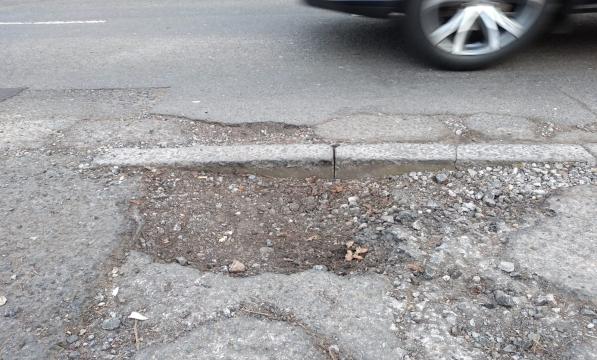New survey paints a bleak picture of the state of local roads in the UK

Each year, the Asphalt Industry Alliance (AIA) commissions a survey of the general condition of local road networks in England and Wales. Data for the annual report comes directly from local authorities responsible for maintenance, and it’s therefore a robust way to closely track improvements and deterioration in any given year.
With a record response rate from councils in England and Wales, the 2022 Annual Local Authority Road Maintenance (ALARM) survey finds a clear link between continued underinvestment and the ongoing structural decline of our local roads.
It also gives a stark warning that the country’s ambitions for encouraging active travel and cutting waste and carbon emissions will not be achieved with a short-term approach that can’t deliver a first-rate local road network.
What's the good of building new motorways when people can't even travel safely on the local networks they need to use every day? Government road funding should adopt a fix it first policy and invest in the local roads we currently use before building more
Duncan Dollimore, Cycling UK's head of campaigns and advocacy
The survey shows the reported backlog of carriageway repairs has increased to £12.64bn – by nearly a quarter (23%), from £10.24bn one year ago, and it would take almost a decade to complete.
This backlog is the one-time catch-up cost local authorities would have to meet to bring their networks up to conditions where they can be maintained in a cost-effective way.
The amount of funding needed to close the gap is the equivalent of £75.5 million per local authority in England and Wales. It is, however, crucial to allow local authorities to meet their net-zero pledges.
Duncan Dollimore, Cycling UK’s head of campaigns and advocacy said:
"Anyone who travels in the UK will use the local road network – whether they’re driving, cycling or walking. But lack of funding and misplaced priorities from governments repeatedly prioritising major road building has left local roads in decay.
"What's the good of building new motorways when people can't even travel safely on the local networks they need to use every day? Government road funding should adopt a fix it first policy and invest in the local roads we currently use before building more."
According to the survey, average highway maintenance budgets across England and Wales have increased slightly by 4% to £24.7m per authority. This does not, however, account for the impacts of increased costs from rising inflation, as well as ongoing impacts of coronavirus restrictions and changes to working practices.
This marginal rise in average budgets also masks the fact that 56% of authorities actually reported a cut or freeze in their budgets, even before inflation was factored in.
The percentage of budgets allocated to the carriageway itself also dropped slightly from 55% to 51%.
While the survey by AIA focuses solely on the carriageway – the road surface and structure itself – highway maintenance budgets allocate funds for other major expenditures. These include street lighting, structural work to bridges, and cyclical work such as cutting grass and checking traffic signals.
It’s important to make this distinction, as the proportional drop in spending on the carriageway reflects a growing pressure to spend money on maintaining these other parts of the highway asset.
Although the average maintenance budget allocated to the carriageway still increased marginally, by 1.5% to £13.2 million, this represents a cut in real terms when measured against inflation.
The 2022 report makes clear that while local authorities have a legal responsibility to keep the UK’s roads safe for their users, with flat funding allocations, many are fighting a losing battle against rising costs.
As the survey’s authors highlight, a longer-term approach and significant investment is needed across the country.
Although recent government announcements around three-year spending on maintenance are a step in the right direction, they don’t go far enough – the longer it takes to put funding in place to tackle the backlog of repairs, the more expensive it will become to do so, as roads continue to deteriorate further.
According to Rick Green, Chair of the AIA, local authorities are ‘no longer waving but drowning’. He sees the current approach as evidence of a short-term mindset, as engineers have to opt for urgent, reactive repairs such as fixing potholes, because they can be completed quickly, instead of maintenance that goes deeper to extend the life of the network.
In England and Wales, a pothole is fixed every 19 seconds – in the last financial year, that amounted to 1.7m potholes.
This is much less efficient when it comes to material usage and carbon emissions, and ‘indicative of a network on the edge’, according to Green.
This need to prioritise work also means that unclassified roads are more than three times more likely than principal or non-principal roads to get RED status in the Road Condition Index (RCI) data – in other words, to be of poor overall condition and likely to need maintenance in the next 12 months.
Of the local road network in England and Wales, 18% (almost 37,000 miles) is now defined as being structurally poor, with less than five years’ life remaining.
While the UK’s roads are in a shocking state, that does not mean there is nothing you can do. Cycling UK’s Fill That Hole app and website allows you to report road defects, and keep a real time record of the state of our roads.







